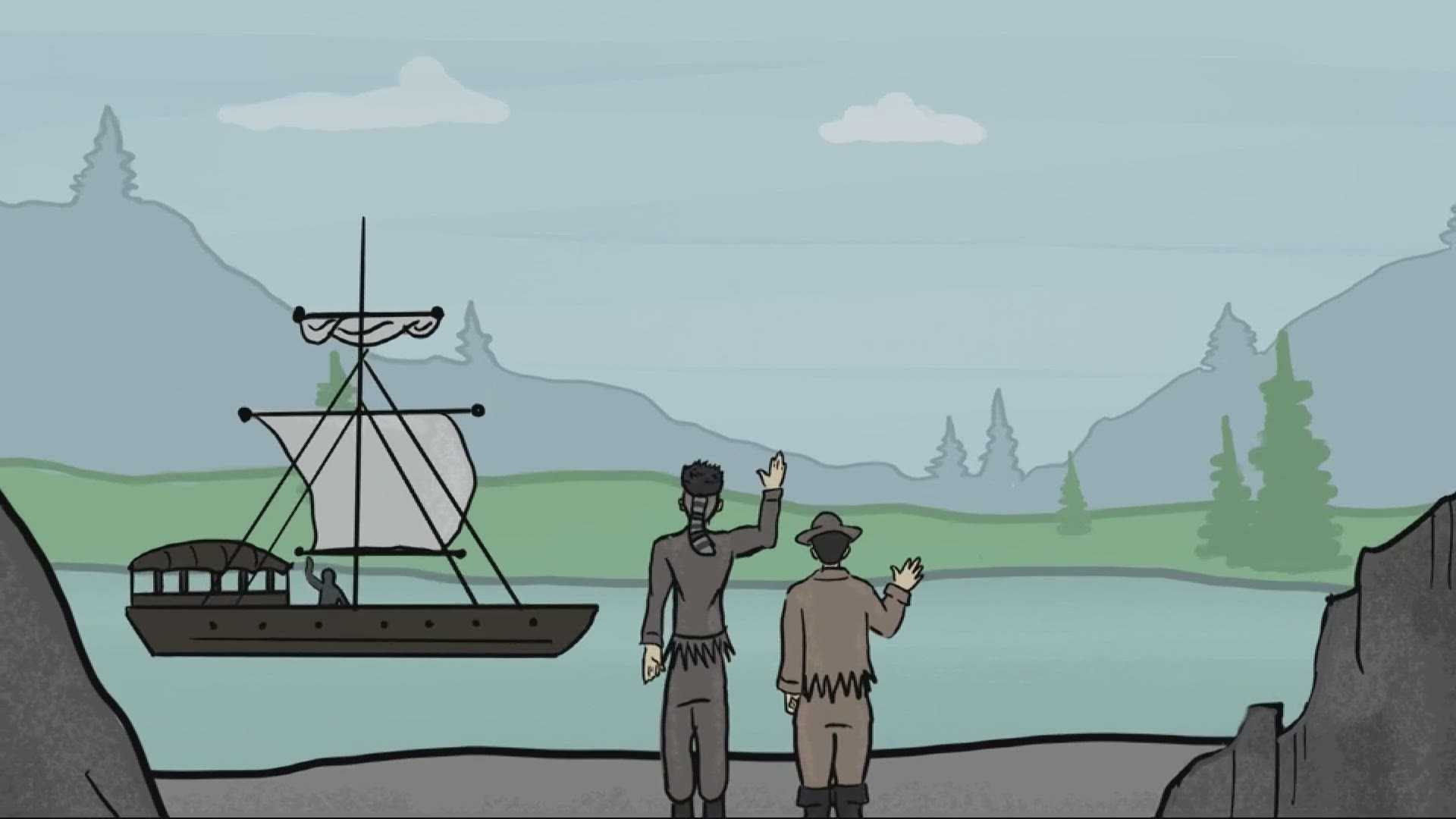PORTLAND, Ore. — The John Day River stretches 147 miles through eastern Oregon. It is the longest undammed river in the state.
At the mouth of the John Day River, where it meets the Columbia River, sits a spot where an encounter with a local tribe left John Day and another explorer naked and afraid. That encounter helped earn the river its name.
So who was John Day?
"We don't know a lot, there are no photos that we know of him or artists renderings of him from the times," said historian Greg Shine, who authored an article for the Oregon Encyclopedia about Day's life.
"I picture this tall, lanky person who was familiar with the outdoors," he said.
Day was from the Midwest, from the Missouri area. He was an experienced hunter with a sure shot and that's the reason John Jacob Astor hired him as part of the Pacific Fur Company just as the group headed west toward Oregon.
"He was hired as a hunter to be a part of that party to provide sustenance along the way," Shine said.
As the party made their way into Idaho, the Pacific Fur Company was too large and needed to split up.
Day and another fur trader, Ramsay Crooks, joined forces to finish the trip west. They ran into trouble when Day started to not feel well and got sick. Crooks tried to help cure him but almost accidentally killed him.
"So he goes out and digs up some roots and makes a type of a soup," Shine said. "Well, he had the idea right, but had chosen the wrong roots to dig up. What one historian believes, it was actually Death Camas."
Death Camas is a flowering plant native to the northwest that is highly toxic.
Shine said the Shoshone Tribe helped Day heal and get Day and Crooks on their way.
It was 1812 and Day and Crooks had made their way to the spot where the present John Day River meets the Columbia River.
That location was a huge place of commerce more than 200 years ago. What Day and Crooks didn't know was that they'd be entering a hostile area; just days before two tribe members had been killed by someone from the Pacific Fur Company.
The story goes that the tribe took out their anger and revenge on the two men, but spared their lives and instead took everything else.
"They are stripped naked, their guns are taken from them, John Day's knife is taken from him as well," Shine said.
Naked as the day they were born and with literally nothing on them, they started to head back east.
"The idea is: 'forget this, we're going back to St. Louis,'" Shine said.
A local tribe eventually helped them with clothes and food.
The pair later spotted a ship coming downriver and waved it down. Turns out that ship was part of the Pacific Fur Company and it picked the men up and continued heading west to Astoria.
"Once he gets to Astoria, he comes back a changed man," Shine said. "This is where you get the myth of John Day going insane."
Day continued to hunt in the Astoria area, and then headed back east with members of the Cowlitz Tribe. But as he neared the spot where he was robbed and stripped naked, Shine said Day "became unnerved, was not making sense with what he was saying."
So Day was sent back to Astoria.
Shine said Day disappeared from historical records for the next few years before his death in February of 1820.
Because of what happened to John Day at the mouth of the river, explorers referred to it as John Day's river. It eventually took on the name of the John Day River.
For someone that had little impact on the history of Oregon itself, there are a number of places that bear his name, including two rivers, two cities, a national park and the John Day Dam.
All because he was left naked and afraid where the John Day River meets the Columbia.
VIDEO PLAYLIST: KGW's What's in a Name? series

